12.6: Actividades- ¿Necesito un suéter?
- Page ID
- 114095
\( \newcommand{\vecs}[1]{\overset { \scriptstyle \rightharpoonup} {\mathbf{#1}} } \)
\( \newcommand{\vecd}[1]{\overset{-\!-\!\rightharpoonup}{\vphantom{a}\smash {#1}}} \)
\( \newcommand{\id}{\mathrm{id}}\) \( \newcommand{\Span}{\mathrm{span}}\)
( \newcommand{\kernel}{\mathrm{null}\,}\) \( \newcommand{\range}{\mathrm{range}\,}\)
\( \newcommand{\RealPart}{\mathrm{Re}}\) \( \newcommand{\ImaginaryPart}{\mathrm{Im}}\)
\( \newcommand{\Argument}{\mathrm{Arg}}\) \( \newcommand{\norm}[1]{\| #1 \|}\)
\( \newcommand{\inner}[2]{\langle #1, #2 \rangle}\)
\( \newcommand{\Span}{\mathrm{span}}\)
\( \newcommand{\id}{\mathrm{id}}\)
\( \newcommand{\Span}{\mathrm{span}}\)
\( \newcommand{\kernel}{\mathrm{null}\,}\)
\( \newcommand{\range}{\mathrm{range}\,}\)
\( \newcommand{\RealPart}{\mathrm{Re}}\)
\( \newcommand{\ImaginaryPart}{\mathrm{Im}}\)
\( \newcommand{\Argument}{\mathrm{Arg}}\)
\( \newcommand{\norm}[1]{\| #1 \|}\)
\( \newcommand{\inner}[2]{\langle #1, #2 \rangle}\)
\( \newcommand{\Span}{\mathrm{span}}\) \( \newcommand{\AA}{\unicode[.8,0]{x212B}}\)
\( \newcommand{\vectorA}[1]{\vec{#1}} % arrow\)
\( \newcommand{\vectorAt}[1]{\vec{\text{#1}}} % arrow\)
\( \newcommand{\vectorB}[1]{\overset { \scriptstyle \rightharpoonup} {\mathbf{#1}} } \)
\( \newcommand{\vectorC}[1]{\textbf{#1}} \)
\( \newcommand{\vectorD}[1]{\overrightarrow{#1}} \)
\( \newcommand{\vectorDt}[1]{\overrightarrow{\text{#1}}} \)
\( \newcommand{\vectE}[1]{\overset{-\!-\!\rightharpoonup}{\vphantom{a}\smash{\mathbf {#1}}}} \)
\( \newcommand{\vecs}[1]{\overset { \scriptstyle \rightharpoonup} {\mathbf{#1}} } \)
\( \newcommand{\vecd}[1]{\overset{-\!-\!\rightharpoonup}{\vphantom{a}\smash {#1}}} \)
\(\newcommand{\avec}{\mathbf a}\) \(\newcommand{\bvec}{\mathbf b}\) \(\newcommand{\cvec}{\mathbf c}\) \(\newcommand{\dvec}{\mathbf d}\) \(\newcommand{\dtil}{\widetilde{\mathbf d}}\) \(\newcommand{\evec}{\mathbf e}\) \(\newcommand{\fvec}{\mathbf f}\) \(\newcommand{\nvec}{\mathbf n}\) \(\newcommand{\pvec}{\mathbf p}\) \(\newcommand{\qvec}{\mathbf q}\) \(\newcommand{\svec}{\mathbf s}\) \(\newcommand{\tvec}{\mathbf t}\) \(\newcommand{\uvec}{\mathbf u}\) \(\newcommand{\vvec}{\mathbf v}\) \(\newcommand{\wvec}{\mathbf w}\) \(\newcommand{\xvec}{\mathbf x}\) \(\newcommand{\yvec}{\mathbf y}\) \(\newcommand{\zvec}{\mathbf z}\) \(\newcommand{\rvec}{\mathbf r}\) \(\newcommand{\mvec}{\mathbf m}\) \(\newcommand{\zerovec}{\mathbf 0}\) \(\newcommand{\onevec}{\mathbf 1}\) \(\newcommand{\real}{\mathbb R}\) \(\newcommand{\twovec}[2]{\left[\begin{array}{r}#1 \\ #2 \end{array}\right]}\) \(\newcommand{\ctwovec}[2]{\left[\begin{array}{c}#1 \\ #2 \end{array}\right]}\) \(\newcommand{\threevec}[3]{\left[\begin{array}{r}#1 \\ #2 \\ #3 \end{array}\right]}\) \(\newcommand{\cthreevec}[3]{\left[\begin{array}{c}#1 \\ #2 \\ #3 \end{array}\right]}\) \(\newcommand{\fourvec}[4]{\left[\begin{array}{r}#1 \\ #2 \\ #3 \\ #4 \end{array}\right]}\) \(\newcommand{\cfourvec}[4]{\left[\begin{array}{c}#1 \\ #2 \\ #3 \\ #4 \end{array}\right]}\) \(\newcommand{\fivevec}[5]{\left[\begin{array}{r}#1 \\ #2 \\ #3 \\ #4 \\ #5 \\ \end{array}\right]}\) \(\newcommand{\cfivevec}[5]{\left[\begin{array}{c}#1 \\ #2 \\ #3 \\ #4 \\ #5 \\ \end{array}\right]}\) \(\newcommand{\mattwo}[4]{\left[\begin{array}{rr}#1 \amp #2 \\ #3 \amp #4 \\ \end{array}\right]}\) \(\newcommand{\laspan}[1]{\text{Span}\{#1\}}\) \(\newcommand{\bcal}{\cal B}\) \(\newcommand{\ccal}{\cal C}\) \(\newcommand{\scal}{\cal S}\) \(\newcommand{\wcal}{\cal W}\) \(\newcommand{\ecal}{\cal E}\) \(\newcommand{\coords}[2]{\left\{#1\right\}_{#2}}\) \(\newcommand{\gray}[1]{\color{gray}{#1}}\) \(\newcommand{\lgray}[1]{\color{lightgray}{#1}}\) \(\newcommand{\rank}{\operatorname{rank}}\) \(\newcommand{\row}{\text{Row}}\) \(\newcommand{\col}{\text{Col}}\) \(\renewcommand{\row}{\text{Row}}\) \(\newcommand{\nul}{\text{Nul}}\) \(\newcommand{\var}{\text{Var}}\) \(\newcommand{\corr}{\text{corr}}\) \(\newcommand{\len}[1]{\left|#1\right|}\) \(\newcommand{\bbar}{\overline{\bvec}}\) \(\newcommand{\bhat}{\widehat{\bvec}}\) \(\newcommand{\bperp}{\bvec^\perp}\) \(\newcommand{\xhat}{\widehat{\xvec}}\) \(\newcommand{\vhat}{\widehat{\vvec}}\) \(\newcommand{\uhat}{\widehat{\uvec}}\) \(\newcommand{\what}{\widehat{\wvec}}\) \(\newcommand{\Sighat}{\widehat{\Sigma}}\) \(\newcommand{\lt}{<}\) \(\newcommand{\gt}{>}\) \(\newcommand{\amp}{&}\) \(\definecolor{fillinmathshade}{gray}{0.9}\)(Note: The activities on this page are designed to promote active communication in Spanish. In an online course, your instructor may ask you to complete the activities using a separate tool, such as video/voice recording or web-conferencing software. Even if the activities are not assigned as coursework, they can be used for individual practice and review.)
- Actividades: La ropa
- Actividades: Los números 101 +
- Actividades: El clima
- Actividades: El verbo gustar + infinitivo
Actividades: La ropa
A.  ¿Cuál es el problema? (What’s the problem?)
¿Cuál es el problema? (What’s the problem?)
Explica cuál es el problema con la ropa que estas personas llevan y qué deben llevar (Explain what the problem is with the clothes that these people are wearing and what they should wear).
- Es el verano y Estela lleva un abrigo y botas para nadar en el mar.
- Rodrigo tiene mucho frío y lleva una camiseta y pantalones cortos.
- Está nevando y Cecille lleva tenis sin (without) calcetines.
- Armando trabaja en la oficina y lleva un traje con una camiseta.
- Hace mucho viento y Luisa lleva un paraguas.
B.  /
/  Adivinanzas (guessing games)
Adivinanzas (guessing games)
- En pequeños grupos, una persona describe la ropa–¡con colores!–de una persona en la clase, y los compañeros adivinan quién es (In small groups, one person describes the clothing–with colors!–of someone in the classroom, and the rest of the group guesses who it is).

- En sus grupos toman turnos haciendo gestos para simular usar diferentes prendas de ropa y los compañeros adivinan cuál prenda de ropa es (In your groups take turns making gestures to pretend to use different articles of clothing, and the rest of the group guesses which article of clothing it is).
Actividades: Los números 101 +
A.  Chequero real (Royal exchequer)
Chequero real (Royal exchequer)
Tú eres tesorero de la Princesa Esmeralda y ella gasta mucho dinero. Llena los cheques apropiadamente, escribiendo los numerales necesarios. ¡No olvides firmar los cheques! (You are treasurer to Princess Esmeralda and she spends a lot of money. Fill out the checks appropriately, writing out the necessary numbers. Don’t forget to sign the checks!).
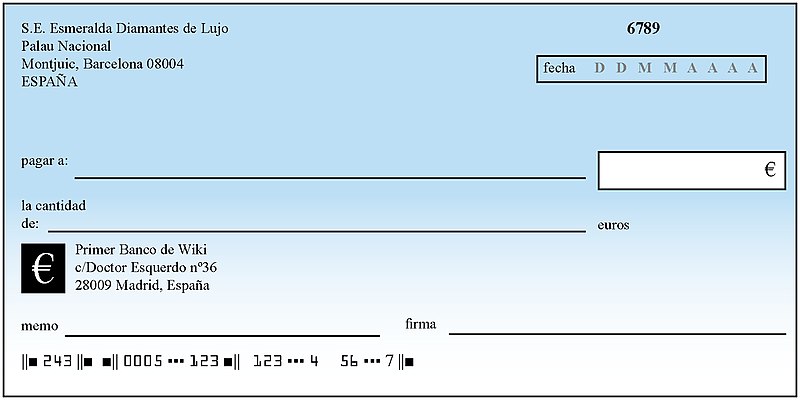
- Bienes Raíces Reales: 36.000€. – alquiler (rent) de vivienda, mes de octubre
- Sra. Natalia Martínez: 19.500€ – sueldo (salary) de cocinera, mes de octubre
- Restaurante Las Albóndigas: 3.708,92€ – fiesta de cumpleaños de sobrino
- Sastrería Las Agujas: 7.148,50€ – reparaciones al vestido de gala (ball gown)
- Tintorería Las Manchas: 1.212€ – lavandería (laundry), mes de octubre
- Letamendi Motor: 10.914€ – alquiler de limusina, mes de octubre
- Depto. De Tráfico Municipal: 15.000€ – multas (fines) de velocidad y parqueo
- Srta. Amalia Legazpi: 20.730€ – sueldo de asistente, mes de octubre con bono
- Fundación Angeles de la Merced: 500.000€ – para huérfanos refugiados (refugee orphans)
- Biblioteca Municipal: 2.750.000€ – renovaciones de biblioteca infantil
B.  Línea de tiempo
Línea de tiempo
Cada estudiante pregunta a su compañero sobre las fechas que faltan en su línea de la historia española, usando verbos en el tiempo presente para hacer las preguntas. (Each student will have to ask their partner about the dates missing from their timeline of Spanish history, using verbs conjugated in the present tense to ask the questions.)
- Estudiante A
-
Estudiante A: Completa tu línea de tiempo. Pregunta a tu compañero(a) sobre las fechas que no tienes y escribe los años (ask your partner about the dates that you don’t have and write the years). Necesitas conjugar los verbos de las preguntas en el tiempo presente (you need to conjugate the verbs in the questions in the present tense).
evento y fecha pregunta Iberia Románica (????-????) a.C. = antes de Cristo
d.C. = después de Cristo1. ¿De qué año a qué año ____ (durar) la España Románica? España Visigótica (409 – 711) primera iglesia al Apóstol Santiago en Compostela (????) 3. ¿En qué año ____ (edificar) los gallegos la primera iglesia en honor al Apóstol Santiago? Califa al-Hakam II en Córdoba (915-976) el Cid Campeador (????-????) 5. ¿Cuando ____ (vivir) y ____ (luchar) contra los musulmanes el Cid Campeador? unión de Aragón y Cataluña (1137) Alfonso X ‘el Sabio’ (????-????) 7. ¿Cuándo ____ (vivir) y ____ (escribir) libros en de poesía e historia, el rey Alfonso X ‘el Sabio’ en Castilla-León? independencia de Portugal (1385) Reconquista de Granada, Expulsión de judíos, Primera gramática castellana, Primer viaje de Cristóbal Colón (????) 9. ¿Cuándo ____ (ocurrir) la Reconquista de Granada, la expulsión de los judíos, la publicación de la primera gramática castellana, y el primer viaje de Cristóbal Colón? ¡Un año muy importante! conquista de los aztecas(1521) conquista de los incas (????)
11. ¿Cuándo ____ (conquistar) Francisco Pizarro a los incas? publicación de Don Quijote (1605) primer rey Borbón de España (????) 13. ¿Cuándo ____ (subir) el primer Borbón al trono español? primera Constitución de España (1812) Guerra Civil Española (????-????) 15. ¿De qué año a qué año ____ (durar) la Guerra Civil Española? crisis económica (2008 – 2014)
- Estudiante B
-
Estudiante B: Completa tu línea de tiempo. Pregunta a tu compañero(a) sobre las fechas que no tienes y escribe los años (ask your partner about the dates that you don’t have and write the years). Necesitas conjugar los verbos de las preguntas en el tiempo presente (you need to conjugate the verbs in the questions in the present tense).
evento y fecha pregunta Iberia Románica (206 a.C. – 409 d.C.) a.C. = antes de Cristo
d.C. = después de CristoEspaña Visigótica (????-????) 2. ¿De qué año a qué año ____ (durar) la España Visigótica? primera iglesia al Apóstol Santiago en Compostela (829) Califa al-Hakam II en Córdoba (????-????) 4. ¿Cuándo ____ (vivir) y ____ (estudiar) la astronomía el Califa al-Hakam II en Córdoba? el Cid Campeador (1043 – 1099) unión de Aragón y Cataluña (????) 6. ¿Cuando ____ (ocurrir) la unión del reino de Aragón y el Condado de Cataluña? Alfonso X ‘el Sabio’ (1221 – 1284) independencia de Portugal (????) 8. ¿Cuándo ____ (ocurrir) la independencia de Portugal? Reconquista de Granada, Expulsión de judíos, Primera gramática castellana, Primer viaje de Cristóbal Colón (1492) ¡Un año muy importante! conquista de los aztecas (????) conquista de los incas (1532)
10. ¿Cuándo ____ (conquistar) Hernán Cortés a los aztecas? publicación de Don Quijote (????) 12. ¿Cuándo ____ (publicar) Miguel de Cervantes su novela famosa, Don Quijote de la Mancha? primer rey Borbón de España (1700) primera Constitución de España (????) 14. ¿Cuándo ____ (escribir) los patriotas la primera constitución española? Guerra Civil Española (1936 – 1939) crisis económica (????-????) 16. ¿Cuándo ____ (caer) España en la crisis económica y cuándo ____ (terminar) la crisis?
Actividades: El clima
A.  ¿Qué tiempo hace en esta estación?
¿Qué tiempo hace en esta estación?
Determina cuál estación representa cada foto y di (o escribe) una oración describiendo el clima en cada una. (Determine which season each of the photos represents and say (or write) a sentence describing the weather in each one.)

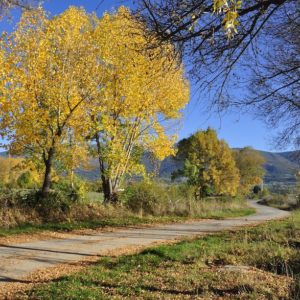




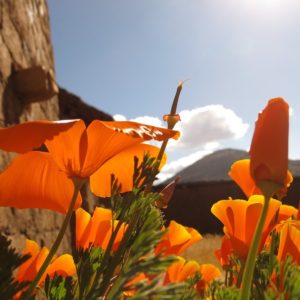
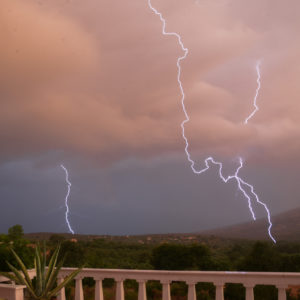

B.  ¿Qué pasa en invierno?
¿Qué pasa en invierno?
Para cada estación, di qué tiempo hace y selecciona un verbo apropiado del banco de palabras para decir qué hacen las personas entonces. (For each season, say what the weather is and choose an appropriate verb from the word bank to say what people do then.)
Modelo: En verano hace calor y las personas nadan en la piscina.
tomar el sol, caminar en el parque, nadar en la piscina, esquiar, cultivar las flores, limpiar las hojas caídas (fallen leaves), limpiar la nieve
- En invierno…
- En primavera…
- En verano…
- En otoño…
C.  ¿Qué tiempo hace en otras ciudades?
¿Qué tiempo hace en otras ciudades?
Busca en internet el tiempo que hace en las siguientes ciudades y contesta las preguntas en oraciones completas (Look up on the internet what the weather is in the following cities, and answer the questions in complete sentences).
Madrid, España; San Antonio, Texas; La Ciudad de Panamá, Panamá; La Paz, Bolivia; Valparaíso, Chile; Montevideo, Uruguay
- ¿Qué tiempo hace ahora?
- ¿Cuál es la temperatura allí ahora?
- ¿Tiene un buen pronóstico (forecast) para el tiempo de mañana y pasado mañana?
- ¿Hace mejor o peor (better or worse) tiempo en tu ciudad ahora?
- ¿Cuál es la estación en las diferentes ciudades? ¡ojo! Algunas son del hemisferio sur.
D.  Las vacaciones
Las vacaciones
You and your friend are taking a road trip for Spring Break and leaving right after classes on Friday. Student A has been to Los Ángeles before, but this is the first time for Student B, although Student B has good friends who live there. Student A will help Student B decide what to pack for the 7-day trip based on the weather. Student B will help Student 1 decide to pack based on the special activities for the week.
- Estudiante 1
-
Paso 1: You have researched the weather forecast for the week you plan to spend in southern California. Based on the forecast below, explain to your friend what the weather will be like during your time there. You may use the present tense for this activity. Note that the degrees are in Celsius!



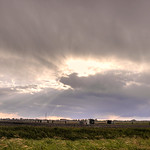


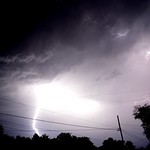
sábado
23ºC/12ºCdomingo
22ºC/13ºClunes
27ºC/13ºCmartes
20ºC/10ºCmiércoles
23ºC/17ºCjueves
21ºC/15ºCviernes
15ºC/10ºCEjemplo: Estudiante 1: Hace sol y hace buen tiempo el sábado. La temperatura está a 23 grados Celsius o más o menos 76 grados Fahrenheit.
Paso 2: Your friend is helping you decide what you should take to LA for Spring Break. Based on what they tell you about the activities they have planned, decided how many of each item you should take on your trip. There are some blanks for additional items you will want to add to your suitcase based on what you know about the weather from Paso 1!
________ traje(s) de baño
________ traje(s)
________ camisa(s)
________ vestido(s)
________ zapatos formales
________ tacones high heels
________ bolso(s)
________ falda(s)
________ pantalon(es)
________ guantes
________ calcetines(s)
______________________________________
______________________________________
______________________________________Paso 3: Compare your list with your partner’s list. Is there anything you forgot to pack? Add it to your suitcase!
- Estudiante 2
-
Paso 1: Your friend is helping you decide what you should take to LA for Spring Break. Based on what they tell you about the weather, decided how many of each item you should take on your trip. There are some blanks for additional items you will want to add to your suitcase based on the specific activities you have planned in Paso 2.
________ gorra(s)
________ pantalones cortos
________ bufanda(s)
________ camiseta(s)
________ jean(s)
________ chaqueta(s)
________ calcetines
________ zapatos de tenis
________ sandalias
________ abrigo(s)
________ paraguas
______________________________________
______________________________________
______________________________________Paso 2: You have arranged several fun activities with the help of your friends who live in the LA area. Use the space below each picture to help you describe what you will be doing while you are in Los Ángeles. Then, tell your friend about the activities you have planned so that Student 1 can pack their bags accordingly. You might discover you need to add some items to your bag as well!
 caminar en la playa
caminar en la playa¿Qué día? _____________________
¿A qué hora? __________________
¿Dónde? ______________________
¿Con quién? ___________________ montar en una montaña rusa
montar en una montaña rusa¿Qué día? _____________________
¿A qué hora? __________________
¿Dónde? ______________________
¿Con quién? ___________________ cantar en el karaoke
cantar en el karaoke¿Qué día? _____________________
¿A qué hora? __________________
¿Dónde? ______________________
¿Con quién? ___________________ bailar
bailar¿Qué día? _____________________
¿A qué hora? __________________
¿Dónde? ______________________
¿Con quién? ___________________ visitar Hollywood
visitar Hollywood¿Qué día? _____________________
¿A qué hora? __________________
¿Dónde? ______________________
¿Con quién? ___________________Paso 3: Compare your list with your partner’s list. Is there anything you forgot to pack? Add it to your suitcase!
Actividades: El verbo gustar + infinitivo
A.  Me gusta…
Me gusta…
Pregunta a tus compañeros si les gusta hacer las siguientes actividades. (Ask your classmates whether they like to do the following activities).
Paso 1: Tu opinión. Primero marca una X en la escala entre “Odio” hasta “Me gusta mucho”, con tu opinión de las actividades. (Your opinion. First mark an X on the scale from “I hate it” to “I like it a lot”, with your opinion of the activities).
| Odio
|
No me gusta
|
Soy indiferente
|
Me gusta
|
Me gusta mucho
|
|
| jugar al fútbol | |||||
| bailar | |||||
| pintar | |||||
| escribir | |||||
| leer libros | |||||
| beber Coca-Cola | |||||
| cantar karaoke | |||||
| hacer tarea |
Paso 2: Encuesta (Survey). Entonces, habla con ocho personas en la clase y pregúntales si les gusta hacer las actividades. Escribe sus nombres en la escala de opinión (Then, speak with 8 people in the class and ask them if they like to do the activities. Write their names on the opinion scale).
- Vivian: ¿Te gusta pintar?
- Mae: ¡Sí, me gusta pintar mucho!
Paso 3: Informe (Report). Finalmente, informa a la clase sobre las opiniones de unos compañeros (Finally, inform the class about the opinions of some classmates).
- Vivian (reporting back): A Mae le gusta pintar mucho, pero a mí no me gusta pintar.
B.  ¿A quién le gusta hacer?
¿A quién le gusta hacer?
Contesta las preguntas con el nombre de una persona a quien le gusta hacer las siguientes actividades. (Answer the questions with the name of a person who likes to do the following activities).
Modelo:
- ¿A quién le gusta pintar?
- A mi novio le gusta pintar.
- ¿A quién le gusta hacer ejercicio?
- ¿A quién le gusta jugar tenis?
- ¿A quién le gusta tocar un instrumento?
- ¿A quién le gusta estudiar lenguas?
- ¿A quién le gusta leer novelas de terror?
- ¿A quién le gusta ver películas románticas?
- ¿A quién le gusta comer en restaurantes italianos?
C.  ¿Qué te gusta hacer?
¿Qué te gusta hacer?
Pregunta a tu compañero qué le gusta hacer durante las fechas específicas abajo. Escribe lo que dice tu compañero y si ustedes están de acuerdo puedes decir: ¡A mí también! (Ask your partner what he/she likes to do during the specific dates below. Write what your partner says and if you agree you can say: Me too!)
Modelo:
El cuatro de julio __________________________________________________
- Rebeca:¿Qué te gusta hacer el cuatro de julio?
- Molly: Me gusta hacer camping el cuatro de julio.
- Rebeca: A Molly le gusta hacer camping el cuatro de julio.
Estudiante 1
- Los fines de semana _____________________________________________
- El lunes por la tarde _____________________________________________
- En el invierno __________________________________________________
- Para Halloween _________________________________________________
- Para su cumpleaños _____________________________________________
- Cuando hace calor ______________________________________________
Estudiante 2
- El sábado por la mañana _________________________________________
- El miércoles por la noche _________________________________________
- En el otoño ____________________________________________________
- Para la Navidad ________________________________________________
- Para su cumpleaños _____________________________________________
- Cuando hace frío ________________________________________________
Download PDF of this activity Version 1, Version 2 (more involved)
Contributors and Attributions
- Con mis alumnos checos en clase con la pizarra digital interactiva. Authored by: Rafael Robles. Provided by: Flickr. Located at: https://www.flickr.com/photos/rafaelrobles/3046485978. License: CC BY: Attribution
- Sun Over Vancouver. Authored by: Jerry Meaden. Located at: https://flic.kr/p/p2tH3K. License: CC BY: Attribution
- Cloudy Sky. Authored by: Lucky Lynda . Located at: https://flic.kr/p/nAMnCe. License: CC BY: Attribution
- Be Better Without the Damn Wires. Authored by: Jo Naylor. Located at: https://flic.kr/p/a44jRX. License: CC BY: Attribution
- Gas Lite Karaoke Bar- Santa Monica. Authored by: Annie Mole. Located at: https://www.flickr.com/photos/anniemole/4297539403. License: CC BY: Attribution
- Disco. Authored by: Martin Fisch. Located at: https://flic.kr/p/RegEvC. License: CC BY: Attribution
- Hollywood. Authored by: Topher. Located at: https://flic.kr/p/27PHdRQ. License: CC BY: Attribution
- Ice Hockey in Argentina. Authored by: Hockeysobrehielo. Located at: https://commons.wikimedia.org/wiki/File:Winter_hockey_argentina.jpg. License: CC BY-SA: Attribution-ShareAlike
- Andenmohn. Authored by: TheusiNo. Located at: https://pixabay.com/photos/andenmohn-sky-bloomed-orange-andes-2656061/. License: CC0: No Rights Reserved
- Summer Lightning Storm In Kefalonia. Authored by: Georgios Liakopoulos. Located at: https://commons.wikimedia.org/wiki/File:Summer_Lightning_Storm_In_Kefalonia_(221981977).jpeg. License: CC BY-SA: Attribution-ShareAlike
- Autumn Rain. Authored by: Duncan Harris. Located at: https://commons.wikimedia.org/wiki/File:Flickr_-_Duncan~_-_Autumn_Rain.jpg. License: CC BY: Attribution
- Snow Explore. Authored by: Luis Hernandez. Located at: https://www.flickr.com/photos/d2k6/4417954872/in/photolist-7Jpb4J-7vJQyi-6frQnD-7vJJLR-2UHFqV-kbdQCQ-Fx55J-7Erpkd-FF9Kv-2WicfX-dPgBob-yF1jp-7Ch3jy-5Njs9A-7JFSMx-5AsQKJ-4FAA5q-9Sux8h-2BVdz2-pEyLzu-bCMFce-5Y46ze-6frR3z-bg9Qkz-7vNCfh-5RJSzN-2BdHWJ-9cu83Y-yF1Eu-hLXXC-5PhHKq-xTRkN-qDTvMR-2Bnav8-6frQQD-4Ab4CS-7zq4xy-yF2sB-21UKKkR-6fw2rs-2BVjJT-2BVffF-xTRkL-aXDjfa-dXa2D5-2BV8Cp-xTTsG-2BZBoU-4Ab4CQ-2BrB9q. License: CC BY: Attribution
- May Showers. Authored by: Lenny DiFranza. Located at: https://www.flickr.com/photos/ldifranza/17311567680/in/photolist-snLiWQ-7ZzoSQ-EhogV-9wwJc6-6rFqf2-efH5fW-nrdShr-6pefp5-kLtd1D-RP6T6Y-2f93oDR-4Cf5bB-9VP7tU-4CeZ9e-evUCiW-7MXmjB-qqHDG4-fJ6DYj-28C5T-9L2C9w-ehk391-dXwQCS-88CnCG-EHdKN1-caSfN-4MiJt4-WoyHLJ-ebGc1U-rwpQwF-2fj4nn1-e88j7j-4JwJ2a-4Cf7p2-GMfyy-amzguS-69ZEBp-caSch-fgVHmR-eWN2vL-bFxx7T-caSd3-9yCM19-9GgjYX-9H2xAW-25xtYF4-6gpZwk-c9Cvuq-sppEdd-26TLmvM-f34e2j. License: CC BY-SA: Attribution-ShareAlike
- Playa Norte. Authored by: 16:9clue. Located at: https://www.flickr.com/photos/53255320@N07/4931666357/in/photolist-8vN5Ai-28eN2Qs-ArWKBn-dsYikX-4XyoUm-XGQioH-4bKTeM-o6pSLP-2Q9NhL-LHiNB2-GCtSED-KEdzGk-f5ebBe-6towM6-eUFmH4-2aWmJ2k-yF5bY3-E4eCbv-ArSfdG-3tu1ad-DfHJRe-BpoNZz-6MyRh-axaCJK-2dQ7rdu-8ukqk4-9Tut1X-JWzUjA-fjsGnH-8rRTWP-sh6HcF-8HPGvA-GCsgqj-8rUZbq-veSLq-V97zz2-AQTBWX-fjGSAh-anxQmy-KhWffT-29j3Dgt-iUhVwz-fnk1ck-JJ6A1c-KFDV5c-8qADsW-g3Nc4x-a96c4P-KxjPRx-LaGW1M. License: CC BY: Attribution
- false winter, just an accident. Authored by: Xavi. Located at: https://www.flickr.com/photos/18614695@N00/3050981929/in/photolist-5DB5CH-aTMF98-2cQSESa-8Mf7dM-aTMGu2-id6aDB-AD7dSK-aCU632-bbNedt-pcec7o-qhbVEy-4ehReB-9v2US3-aR4xqt-pcdPvg-PKnurf-hRQW98-91qhs6-prMyjB-paD62b-pq6RXd-7TdvDu-7Tdv1b-hacWxt-hadpH1-zh4gXj-4jEPSd-h7oTiZ-prYjko-5Cj61d-AD8NfV-pazWuz-B4t1k6-4frWrR-ACKb4c-BwYKje-B2r3eT-PDHBuD-BumS1K-AE8rDA-ACwxmT-Ar5tMF-AYYfV1-AVEKGU-AAFc4B-BjrzBr-B7AACQ-A9HhBE-BqvEoT-BwQ7K8. License: CC BY: Attribution
- Otou00f1o u00c1rboles. Authored by: Frayle. Located at: https://www.flickr.com/photos/sohura/15139333734. License: CC0: No Rights Reserved
- License: CC BY: Attribution
- Activities. Authored by: Diamond Wilson with Lumen Learning. License: CC BY: Attribution







